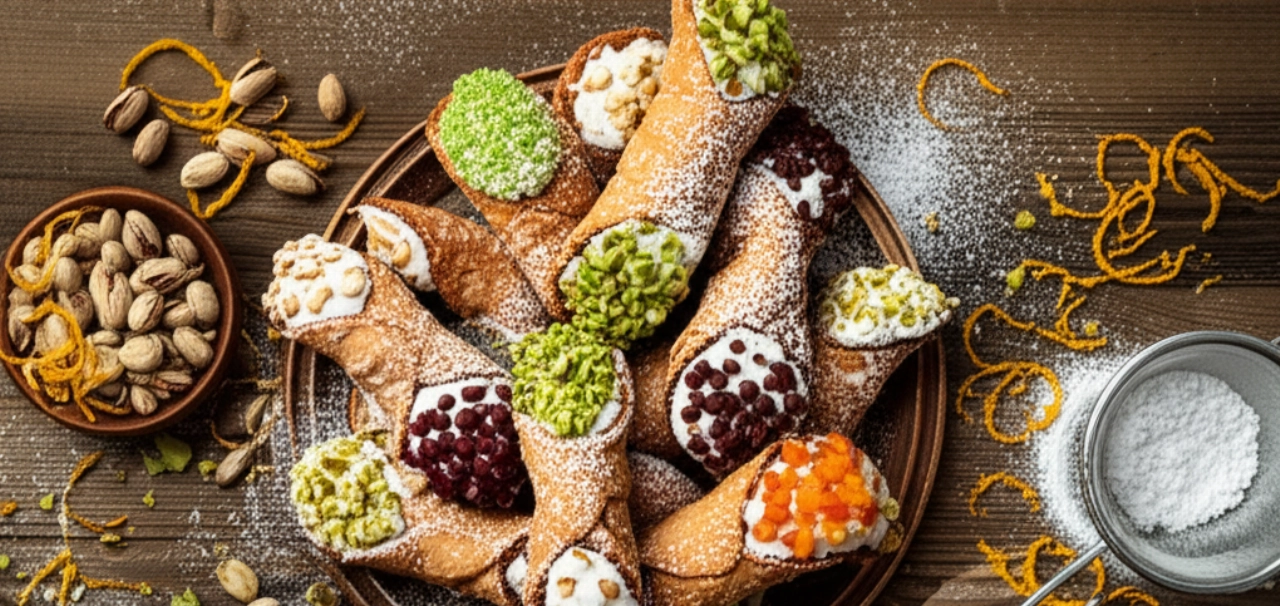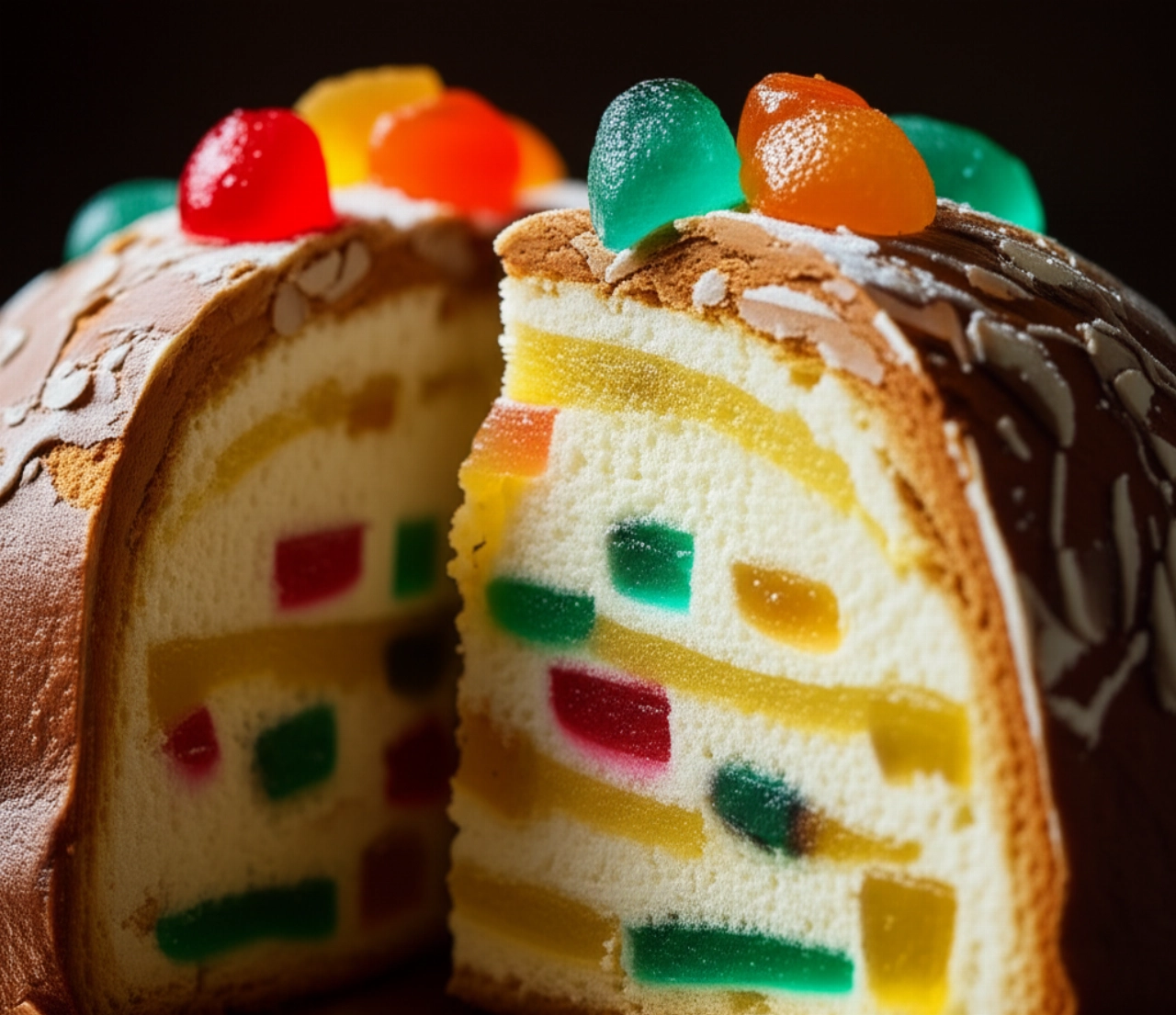Imagine the intoxicating scent of a Sicilian pastry shop, the crisp sound of shells breaking under your teeth, and the velvety sweetness of a ricotta cream enveloping your palate. A dream, isn't it?
Too often, however, preparing cannoli at home seems like a titanic undertaking: shells that don't puff up, break, or absorb too much oil; lumpy or too liquid creams. The fear of wasting precious ingredients and the desire for an authentic result can deter even the most passionate home bakers.
But fear not! I'm here to guide you step by step, with the patience and experience of someone who has been making these sweets for a lifetime. In this guide, you won't just find a list of ingredients, but all the secrets to preparing the perfect Sicilian Cannoli, the ones that will make you exclaim 'Wow!' and make you feel like a true pastry chef. Success is guaranteed, and your kitchen will become your favorite pastry shop.

The Pillar of Success: Crispy Shells and Velvety Cream, No Secrets!
The true secret of Sicilian Cannoli lies in the perfect balance between the crispness of the shell and the softness of the cream. Forget past frustrations: I'll guide you towards bubbly, super-crispy shells, and a ricotta cream so velvety and stable that you won't want to stop tasting it. This is the promise of Search Recipes: a result that exceeds all expectations.

Smart Ingredients: The Choice That Makes All the Difference for Your Cannoli
For the Shells:
- 00 Flour: The base, but not just any flour. It must be of good quality to provide structure.
- Sugar: A small amount, just to add a touch of sweetness and aid browning.
- Unsweetened Cocoa Powder: A pinch, for that dark color and a slightly bitter aftertaste that balances the cream's sweetness.
- Coffee or Marsala: Here lies the secret to aroma and crispness! Marsala (or a good dry white wine) is the traditional choice, but a strong, cold espresso gives a unique aroma and unexpected crispness. Choose what inspires you most, but don't omit it!
- Lard: The magic ingredient for flakiness. Do not use butter or oil in the dough; lard is irreplaceable for the perfect texture.
- Egg: Only the yolk, to bind the dough and make it more elastic without weighing it down.
- Vegetable Oil (for frying): Peanut or sunflower oil; the important thing is that it's abundant and at a controlled temperature for perfect frying.
For the Ricotta Cream:
- Sheep's Ricotta: The heart of the cannolo! It must be very fresh, of excellent quality, and, crucially, well-drained. This is the step that ensures a dense, non-watery cream.
- Powdered Sugar: Dissolves better and makes the cream smoother.
- Dark Chocolate Chips: Don't overdo it; they should be a delightful touch, not the main star.
- Candied Fruit (orange and citron): Small cubes, for a contrast of flavors and a citrus note reminiscent of Sicily.
- Candied Cherries or Candied Orange Peel: For decoration, a touch of color and tradition.

The 3 Mistakes to Avoid for Bakery-Quality Cannoli (and How to Fix Them)
- Dough too dry or overworked: If the dough is too hard, the shells won't puff up. Work it just enough until it's smooth and elastic, then let it rest. This is crucial for bubble formation during cooking.
- Undrained ricotta: Watery ricotta will make your cream liquid and bland. Drain it for at least 12-24 hours in the refrigerator, perhaps in a sieve with a weight on top. This is the secret to a dense, velvety cream.
- Wrong oil temperature: If the oil is too cold, the shells will absorb too much fat and be soggy. If it's too hot, they will burn on the outside and remain raw inside. Maintain a constant temperature of about 170-175°C (338-347°F). A kitchen thermometer is your best friend here!
Grandma's Secret: That Extra Touch That Makes Cannoli Unforgettable
My grandmother, when making cannoli, always insisted on one detail: after rolling the dough very thin, she would pass it with a fluted pastry wheel. Not just for beauty, but because those small 'points' helped the dough puff up more uniformly, creating those perfect bubbles that are the hallmark of a well-made shell. And another trick: always fry only a few cannoli at a time to avoid lowering the oil temperature!
Let's Prepare Sicilian Cannoli Together: The Step-by-Step Guide to Success
Put on your apron, here we go! Follow each step carefully, and you'll see what a masterpiece you'll bring to the table.
For the Shells:
- Prepare the dough: In a large bowl, combine the sifted flour, sugar, cocoa, and a pinch of salt. Make a well in the center and add the softened lard, egg yolk, and Marsala (or coffee).
- Work with love: Begin kneading with your hands, gradually incorporating the flour. Work the dough on a floured surface for about 10-15 minutes until you get a smooth, elastic, and homogeneous ball. Do not overwork it, or it will become tough.
- Warrior's rest: Wrap the dough in plastic wrap and let it rest in the refrigerator for at least 30 minutes (preferably an hour). This step is crucial to relax the gluten and make the dough easier to roll out.
- Roll and cut: Take the dough back and divide it into small portions. Roll it out very thinly with a pasta machine (to the second-to-last or last thickness setting) or with a rolling pin, until you get an almost transparent sheet. Using a round pastry cutter (about 8-10 cm in diameter) or a fluted wheel, cut out discs or squares.
- Shape the cannoli: Wrap each disc around the appropriate metal cannoli tubes, slightly overlapping the edges and sealing them well with a little egg white or water. Make sure they are well sealed to prevent them from opening during cooking.
- Perfect frying: Heat abundant vegetable oil in a deep pot (or a deep fryer) until it reaches 170-175°C (338-347°F). Fry 2-3 cannoli at a time, turning them often, until they are golden and full of bubbles. This will take about 2-3 minutes per side.
- Drain and cool: With a slotted spoon, drain the cannoli and place them on paper towels to remove excess oil. As soon as they are lukewarm, gently slide them off the tubes. Let them cool completely on a wire rack.
For the Ricotta Cream:
- Drain the ricotta: If you haven't already, place the ricotta in a fine-mesh sieve, cover with plastic wrap, and let it drain in the refrigerator for at least 12-24 hours. This is the secret to a dense, non-watery cream.
- Sieve and sweeten: Pass the drained ricotta through a fine sieve (or blend briefly with an immersion blender) to make it incredibly smooth and velvety. Add the powdered sugar and mix gently with a spatula, without whipping, until well incorporated.
- Add the flavors: Gently fold in the dark chocolate chips and diced candied fruit. Mix only as much as needed to distribute them evenly.
- Rest in the fridge: Cover the bowl with plastic wrap and let the cream rest in the refrigerator for at least 30 minutes. This will allow the flavors to meld and the cream to firm up further.
Assembly and Decoration:
- Fill the cannoli: Just before serving, fill the shells with the ricotta cream using a piping bag (without a nozzle or with a wide nozzle) or a spoon. Fill from both sides to ensure the cream reaches the center.
- Decora with style: Decorate the ends of the cannoli with candied cherries, candied orange peel, or a dusting of powdered sugar. If you want an even more indulgent touch, you can dip the ends in melted dark chocolate and then in chopped pistachios.
Tips and Frequently Asked Questions about Sicilian Cannoli
- Can I prepare the shells in advance? Absolutely yes! Fried shells can be stored in a tightly sealed tin box for several days, maintaining their crispness. The important thing is to fill them with cream only a few minutes before serving, otherwise they will become soggy.
- How do I know if the oil is at the right temperature without a thermometer? You can do a test: immerse a small piece of dough in the oil. If it immediately rises to the surface and fries vigorously, the temperature is right. If it sinks or fries too slowly, it's too cold. If it burns immediately, it's too hot.
- Can I use cow's milk ricotta? Tradition calls for sheep's milk ricotta, which has a more intense flavor and a more suitable consistency. If you really can't find it, you can use cow's milk ricotta, but make sure it's very fresh and drain it even longer. The result will still be good, but less "Sicilian."
- Why aren't my shells forming bubbles? This can depend on several factors: dough not thin enough, dough overworked (which makes the gluten too tough), oil not hot enough, or not abundant enough. Try again, rolling the dough even thinner and checking the oil temperature.
- How can I store leftover filled cannoli? Filled cannoli do not store well for long, because the cream moistens the shell. If you have leftovers, you can keep them in the refrigerator for a maximum of one day, but the shell will lose some of its crispness. The ideal is to fill them just before serving.
There you have it! Now you no longer just have a recipe, but all the secrets to bringing a piece of Sicily to your table, a dessert that tastes of celebration, tradition, and love. Every bite will be a journey, an explosion of flavors and textures that will make you feel like a true master pastry chef.
Don't be afraid to dare. Cooking is an art, and with this solid guide, success is within reach. Prepare your cannoli, enjoy the applause, and the satisfaction of having created something wonderful with your own hands.
Have you tried our recipe? We are very curious to see your masterpiece! Leave a comment below, tell us how it went, or share a photo on Instagram tagging @CercaRicette.it. If you loved these cannoli, you can't miss our recipe for Sicilian Cassata or another classic like the Original Tiramisu.





